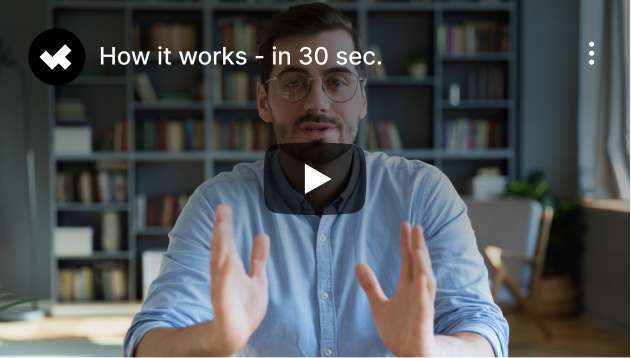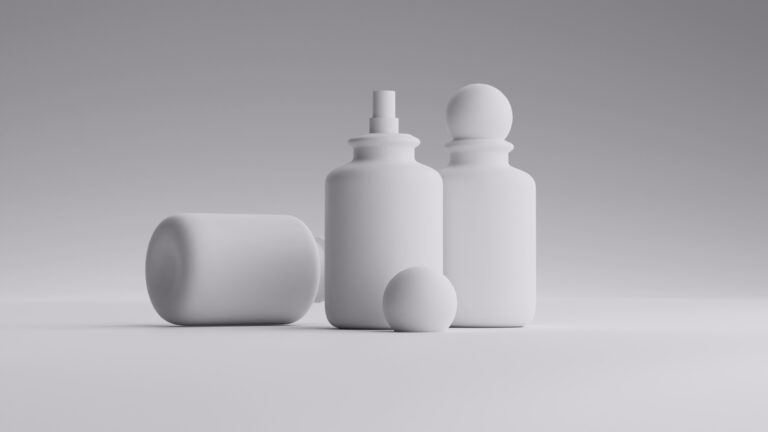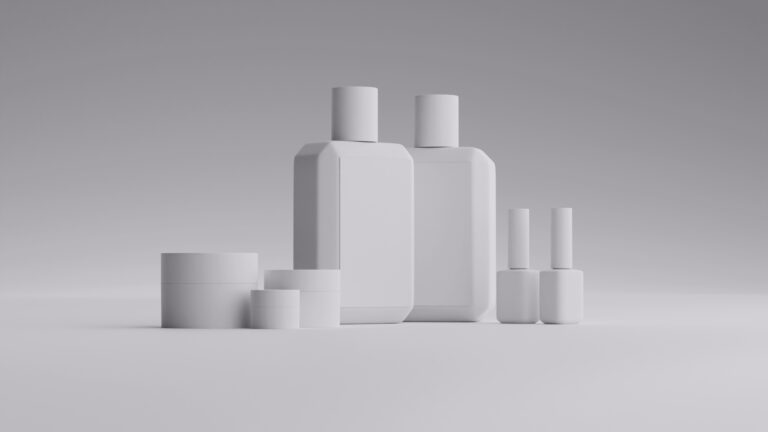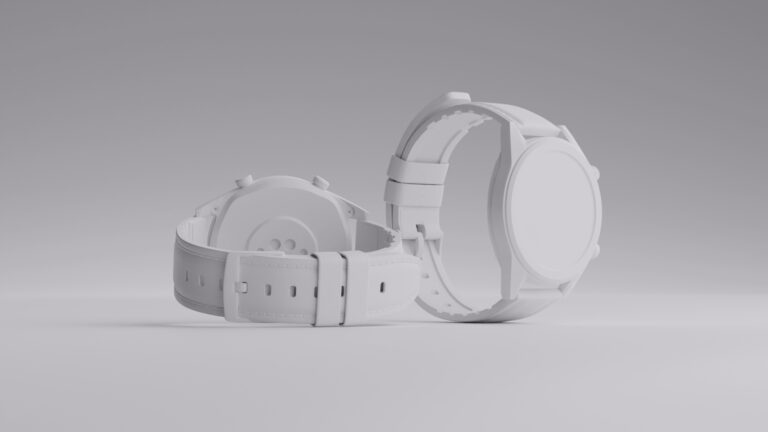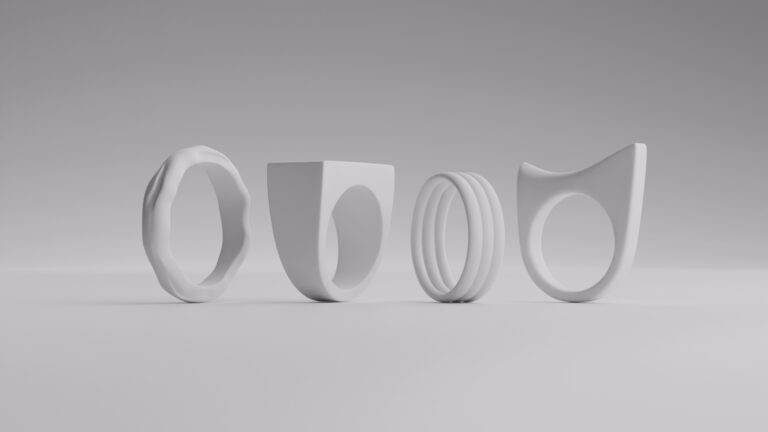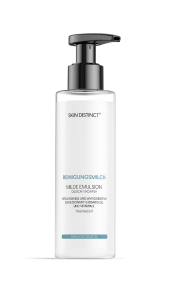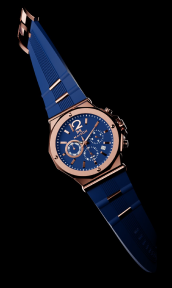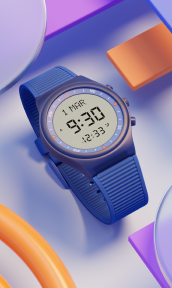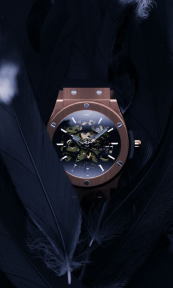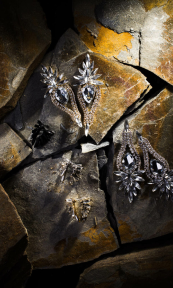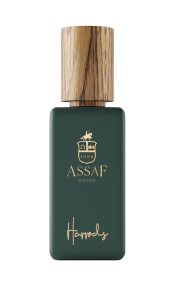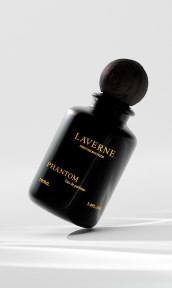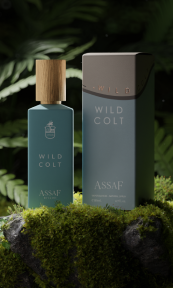3D product visualization has completely changed how businesses showcase their products online. Static images just don’t cut it anymore. Today’s shoppers want to see products from every angle before hitting that buy button, and 360 product rendering makes this possible.
The tech behind these interactive 3D experiences has come a long way, with 2025 bringing some seriously great innovations that make product visualization more accessible and realistic than ever. Whether you’re running an e-commerce store looking to boost sales or a designer wanting to level up your skills, this guide will walk you through everything you need to know about creating awesome 360 product views that wow your customers and drive conversions.
What is 360 product rendering?

360 product rendering creates digital, interactive product visualizations that let users rotate and view items from all angles. It’s like giving your online customers the ability to pick up and examine products just like they would in a physical store.
At its core, 360 product rendering starts with 3D modeling. Designers create detailed digital versions of physical products using specialized software. These models capture not just the shape, but textures, materials, and how they interact with light, making them look incredibly realistic.
The rendering process transforms these models into the interactive visualizations you see on websites. Modern rendering engines calculate how light bounces off different surfaces, creating lifelike shadows and reflections. Adobe found that websites with 360 product views see conversion rates jump by up to 27% compared to those with just static images.
Unlike traditional product photography, you don’t need physical samples for 360 rendering. This is super helpful for pre-launch marketing when real products might not exist yet. Plus, you can easily change colors, materials, and features without reshooting anything.
The end result? An interactive experience where customers can spin products around with their mouse or finger. This helps them understand your product’s size, features, and details they’d miss in regular photos. Research shows people spend over five times longer looking at interactive 3D content compared to static images.
Thanks to advances in web technology, these 360 views now work smoothly on most devices without special plugins, giving all your visitors a seamless experience.
Latest trends and technologies in 2025

The 360 product rendering world is evolving fast, with 2025 bringing some game-changing advancements. Let’s look at what’s hot right now.
AI-powered rendering
AI has transformed the 360 product rendering workflow by automating tasks that used to take forever. Today’s AI tools can create complete 3D models from simple product descriptions or just a few reference photos, cutting production time dramatically.
These smart systems analyze thousands of similar products to understand common shapes and features, generating accurate models with minimal human input.
AI doesn’t stop at model creation, either. Smart rendering engines automatically optimize lighting to highlight product features and adjust materials for photorealism. The tech learns from user preferences, so renders get better over time. Businesses using AI-enhanced rendering report consistently higher customer satisfaction compared to traditional methods.
AI also helps deliver 360 views more efficiently. Adaptive rendering systems adjust image quality based on network conditions and device capabilities, ensuring smooth experiences everywhere.
Real-time rendering capabilities
Remember when renders took hours to complete? Those days are fading fast. Today’s rendering engines produce photorealistic images instantly, letting customers customize products on the fly.
This real-time capability allows shoppers to personalize products directly in the 360 view, seeing immediate visual feedback as they pick different colors or features. Industry research has found this significantly boosts average order values, as customers feel more confident exploring premium options and upgrades when they can instantly see how they look.
What made this possible? Widespread adoption of ray-tracing hardware in everyday devices. Even mid-range smartphones now have specialized processors that calculate complex light interactions in milliseconds, making real-time rendering accessible to businesses of all sizes.
8K resolution and beyond
Image quality keeps getting better, with 8K resolution becoming the new standard for premium 360 product renders. This ultra-high definition lets customers zoom way in without losing clarity.
The push for higher resolutions comes from the spread of high-DPI displays and rising consumer expectations for crystal-clear product images. Retailers find that high-res renders matter most for products where fine details count, like jewelry and premium electronics. Leading luxury brands have reported significant improvements in both conversion rates and reductions in returns after implementing ultra-high-definition rendered views for their products.
New compression algorithms designed specifically for 3D content have solved previous file size concerns. These advanced techniques maintain excellent visual quality while dramatically reducing file sizes, making 8K renders practical even for mobile users.
Smart variable resolution technology has also emerged as a game-changer. This approach loads higher detail only for areas customers are actively examining, effectively balancing performance with visual quality. This ensures everyone gets a great experience, regardless of their internet connection speed.
Augmented reality integration
360 product rendering now flows seamlessly into AR experiences, letting customers visualize products in their own space. This natural evolution from online viewing to real-world visualization has dramatically improved purchasing confidence.
The latest AR systems use 360 product renders as their foundation, creating a consistent visual experience from website to AR view. Technical barriers to AR have largely disappeared, with WebAR letting experiences launch directly from browsers without app downloads. This frictionless approach has increased AR usage greatly.
AR integration really shines for products where size and fit matter. Furniture retailers, home décor brands, and appliance sellers have reported significant reductions in return rates after implementing AR-enabled 360 product visualization. This technology helps customers better understand how products will fit in their spaces, leading to more confident purchasing decisions and fewer surprises when items arrive.
Benefits and challenges

Adding 360 product rendering to your site comes with some awesome benefits, but also a few hurdles to overcome. Let’s break them down so you can make smart decisions about this technology.
Benefits
Increased customer engagement and confidence
360 product rendering creates an interactive experience that keeps shoppers on your page longer and helps them connect with your products. Instead of passively looking at photos, users actively engage by spinning, zooming, and exploring.
Research from the Baymard Institute shows that sites with 360 product views keep visitors engaged significantly longer than those with static images. More time on your site means more chances to convince people your product is worth buying.
But the real magic happens when this interaction builds purchasing confidence. When customers can check out a product from every angle, they know exactly what they’re getting. Studies by BigCommerce reveal that many consumers abandon purchases simply because they “can’t see a product from all angles.”
This confidence boost shows up in your conversion rates, too. Industry data indicates that websites using 360 product rendering see substantial increases in conversions. Why? Because customers are less likely to abandon carts when they’re sure about what they’re buying.
Reduced returns and higher customer satisfaction
One of the biggest wins with 360 product rendering is fewer returns. When customers can thoroughly check out products before buying, what they receive matches what they expected.
A UPS study found that e-commerce businesses using 360 product visualization saw a substantial reduction in returns compared to industry averages. For businesses with tight margins, that reduction makes a huge difference to your bottom line.
Beyond saving money on returns, you’ll build trust and loyalty. When products meet expectations, customers come back. Research indicates that a substantial majority of shoppers are more likely to buy again from retailers who provide comprehensive product visualization.
Competitive advantage in the marketplace
In today’s crowded online marketplace, 360 product rendering helps you stand out. Despite its effectiveness, only a fraction of e-commerce sites currently offer this feature.
Using this technology signals that your business is innovative and customer-focused. Multiple studies have found that consumers consistently rate brands using 360 visualization as “more premium” and “more trustworthy” than those stuck with static images.
This advantage extends to your marketing efforts too. Marketing analytics show that email campaigns featuring 360 product renders get substantially higher click-through rates compared to those with static images. Similarly, social media posts with interactive product views generate much more engagement.
By adopting advanced 360 rendering early, you’re positioning yourself as an industry leader – which brings benefits beyond direct sales, including media coverage, partnership opportunities, and stronger brand equity.
Challenges
Production costs and time requirements
Creating high-quality 360 product renders isn’t cheap or quick. You’ll need to invest in technology, expertise, and time to make it happen.
Professional 3D software licenses can be quite expensive per year, per seat. If you’re bringing this in-house, you’ll also need powerful computers – high-performance workstations represent another significant investment.
Then there’s talent. Skilled 3D artists command good salaries, with experienced specialists earning competitive wages in the US market. Many businesses outsource this work instead, paying variable rates per product depending on complexity.
Time is another factor. Even with modern workflows, creating a high-quality 360 product render takes many hours for complex items. This can create bottlenecks when launching new products, especially if you have a large catalog.
You’ll need to weigh these costs against potential returns. While the investment often pays off through increased sales and fewer returns, the initial outlay can be tough for smaller businesses or those with tons of products.
Technical implementation barriers
Getting 360 product rendering working smoothly on your e-commerce site can be tricky. Integration with your existing website often requires careful planning and sometimes major changes.
Most e-commerce platforms weren’t built with 3D content in mind. While popular platforms now have plugins for 360 viewing, these sometimes have limitations. Research indicates that many businesses cite technical integration as their biggest challenge when implementing advanced product visualization.
File size and loading speed remain concerns. Even with modern compression, high-quality 360 renders can add substantial weight to pages, potentially slowing things down. This is especially problematic for mobile users, who now make up the majority of e-commerce traffic.
Browser compatibility can also cause headaches. While WebGL support is widespread, some users still browse with incompatible browsers. This means you’ll need fallback options, adding development complexity.
Security considerations add another layer of complication. Interactive 3D content may require allowing specialized scripts that strict security policies might flag. This often requires extra IT resources to implement safely, especially for enterprise businesses.
Maintaining visual consistency
Keeping your product visuals consistent across different product lines and matching other marketing materials can be surprisingly challenging.
Brand consistency means paying attention to details like lighting, environments, and material rendering across all products. When renders are created over time or by different artists, subtle differences can creep in. Research suggests that even slight inconsistencies can significantly reduce brand recognition.
You’ll also need to make sure rendered products match their physical counterparts. Small differences between digital renders and actual products can disappoint customers and increase returns. Getting this right requires careful color management and regular checks against physical samples.
Making products look great across different devices adds another challenge. Your renders need to shine whether viewed on a phone, tablet, or desktop with varying screens. This means testing across multiple devices and sometimes creating device-specific rendering settings.
As your product line evolves, you’ll need to manage updates efficiently. When products get minor changes, you’ll have to decide whether to create new renders or modify existing ones. Large catalogs can quickly become unwieldy without good asset management systems.
Practical tips for great 360 product rendering

Want to create 360 product renders that really pop? Here are some practical tips to help you get the most from your 3D visualization efforts.
Optimize your workflow
Setting up an efficient production process is key to sustainable 360 product rendering. Start by creating templates for common product types to ensure consistency while saving time.
Invest in a digital asset management system made for 3D content. These platforms keep track of model versions, textures, and render settings, preventing mistakes and duplicate work.
Try a modular approach to modeling. By creating reusable components for common elements, you’ll speed up the creation of product variants. A furniture maker might build a library of standard leg styles, hardware, and materials that can be mixed and matched to create thousands of unique product renders.
Automation scripts can eliminate repetitive tasks. Tools like Blender’s Python API or Maya’s MEL scripting let you automate camera positioning, lighting, and output settings. Even basic scripts can save tons of time across large product catalogs.
Set up clear quality checkpoints throughout production. Early reviews of wireframes and test renders can catch issues before you’ve invested too much time. This approach reduces costly revisions and helps you stay on schedule.
Perfect your lighting setup
Lighting makes or breaks your 360 product renders. A three-point lighting setup (key, fill, and rim lights) creates dimensional highlighting that shows off your product’s best features.Good lighting communicates materials, textures, and form clearly. Studio lighting techniques adapted for digital environments work best for most consumer products.
HDRI (High Dynamic Range Imaging) environments have become standard in professional rendering. These 360-degree environmental maps provide realistic ambient lighting and reflections that make products look natural. You can find libraries of pre-made HDRI environments for different settings, from showrooms to outdoor scenes.
Consider creating different lighting presets for different product types. Electronics might look best with crisp, high-contrast lighting that highlights sleek surfaces, while furniture often looks better with softer, diffused light. These category-specific approaches work better than a one-size-fits-all approach.
Don’t forget about shadows – they ground products in space and provide important visual cues. Soft, realistic shadows significantly improve how viewers perceive product quality. Products with natural shadow rendering can be perceived as more premium than identical products with simplified or missing shadows.
Focus on material accuracy
Getting materials right is crucial for convincing 360 product renders. Modern physically-based rendering (PBR) systems need proper real-world material properties, not just simple colors.
Spend time developing a good material library for substances commonly used in your products. Well-defined metals, plastics, fabrics, and other materials can be reused, ensuring consistency while saving time. Good material libraries can cut production time a great deal.
Texture resolution matters, especially for natural materials like wood, leather, or fabric. High-resolution texture maps (at least 4K for detailed materials) ensure customers can zoom in without losing realism. This is particularly important on mobile devices where people often pinch-zoom to check details.
For critical products, consider material scanning technology. Specialized scanners can capture the exact optical properties of physical materials, including subtle variations in reflectivity and surface texture. While expensive, this guarantees accurate representation of luxury materials where authenticity matters.
Remember that material rendering isn’t just about looks – it’s about conveying physical properties. A leather sofa should not only look like leather but suggest softness and flexibility through appropriate light interaction. This perceptual accuracy strongly influences purchasing decisions.
Create interactive hotspots
Make your 360 product renders more useful by adding interactive hotspots that highlight key features and provide extra info. These clickable points transform passive viewing into an educational experience that showcases your product’s benefits. When customers actively engage with product features, they better understand and remember benefits, leading to more confident purchases.
Place your hotspots strategically to guide customers through a logical discovery process, highlighting features in order of importance. Analysis shows that viewers typically interact with 3-5 hotspots before deciding, so prioritize your most compelling selling points.
Keep hotspot content concise and benefit-focused rather than purely technical. Instead of saying “800-thread count cotton,” a bedding hotspot might say “Ultra-soft 800-thread count cotton for luxury comfort that lasts.”
Try using different hotspot styles for different types of information. Feature highlights, specs, and usage demonstrations can be visually distinguished to help customers quickly find what they’re looking for.
Why choose CGI for your 360 product rendering

Computer-generated imagery (CGI) beats traditional photography for 360 product views in several key ways. Understanding these benefits will help you make smart choices about your visualization approach.
CGI gives you amazing flexibility throughout the product lifecycle. Need to change colors, materials, or features? No problem – no costly reshoots required. This is super valuable during product development when physical samples don’t exist yet or when offering customization options.
The consistency you get with CGI is unbeatable. Lighting, camera angles, and environments stay perfectly controlled across your entire product line, creating a cohesive brand look. This consistency extends to seasonal updates and new products, maintaining a unified visual identity.
Logistically, CGI eliminates many headaches of traditional product photography. No physical samples to ship to studios, no complex setups for rotating products, and no storing products for potential reshoots. These simplifications mean faster time-to-market and lower overall costs.
Best of all, CGI lets your creativity run wild beyond what’s physically possible. Show products in environments that would be impossible to photograph. Create cross-sections to reveal internal components, or animate products to demonstrate features in ways that really connect with customers.
For e-commerce business owners, CGI-based 360 product rendering delivers real competitive advantages. The enhanced customer experience leads to measurable improvements across key business metrics: conversion rates see significant increases, average order values grow substantially, and return rates drop considerably. These improvements deliver lasting ROI that more than justifies the initial investment.
Wrapping up
360 product rendering has evolved from a luxury feature to an essential part of modern e-commerce. As we’ve seen throughout this guide, the technology now offers incredible realism, efficiency, and engagement potential.
The big takeaway? 360 product rendering isn’t just about pretty pictures – it’s about giving customers the confidence they need to buy online. By letting people explore products from every angle, you’re bridging the gap between online browsing and in-store shopping experiences.
The barriers to implementation are falling fast as software gets more user-friendly, automation cuts production time, and integration with e-commerce platforms becomes smoother. For many businesses, it’s no longer a question of if they should implement 360 visualization, but how quickly they can do it before competitors gain an edge.
As you consider adding or upgrading your 360 product rendering, remember that the best approaches balance technical quality with strategic business goals. Focus on products where details, materials, and functionality strongly influence buying decisions, and you’ll see the biggest returns on your investment.
The future of online shopping is interactive, immersive, and information-rich – exactly what good 360 product rendering delivers. By embracing these capabilities now, you’re putting your business at the forefront of e-commerce innovation while giving customers the exceptional shopping experiences they increasingly expect.
FAQ
How much does 360 product rendering typically cost?
Costs vary by product complexity and quality needs. Simple products might run $300-$700 when outsourced, while complex items can reach $1,000-$3,000. Building in-house capabilities requires investment in software, hardware, and talent – but the boost in conversions and reduction in returns often justifies the expense for many businesses.
What’s the difference between 360 product photography and 360 product rendering?
360 photography involves taking multiple photos of a physical product and combining them. Rendering creates a digital 3D model and generates views from any angle. Rendering offers more flexibility (no physical samples needed), perfect consistency across products, and creative freedom (showing impossible views or cutaways). Each has its place depending on your specific needs.
How long does it take to create a 360 product render?
Timeframes depend on complexity. Simple products might take 8-15 hours from modeling to final rendering, while complex products with intricate details could require 30-80 hours. Color variations are much quicker once the initial model exists. Plan for 1-3 weeks of lead time for new products.
Can customers view 360 product renders on mobile devices?
Absolutely! Modern 360 viewers work great on mobile, with touch controls for rotation and pinch-to-zoom. Good optimization is key – techniques like progressive loading and efficient compression ensure smooth experiences even on slower connections. With 64% of online shopping happening on mobile, this compatibility is essential.
Do I need special software to display 360 product renders on my website?
Most e-commerce platforms now have built-in support or plugins available for 360 viewers. Shopify, WooCommerce, and Magento all offer multiple options. For custom websites, there are many JavaScript libraries that developers can easily integrate. The technology runs in standard browsers without requiring customers to download anything special.



